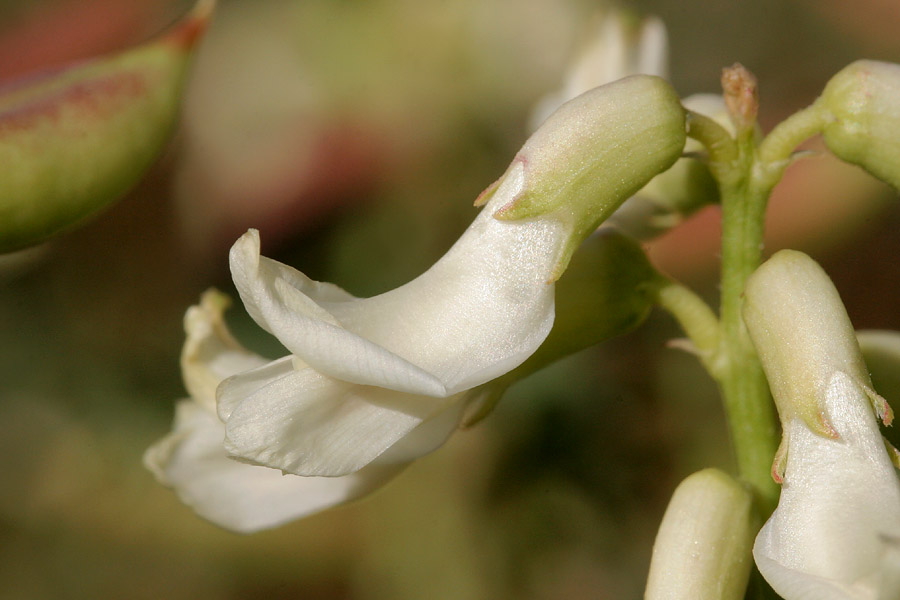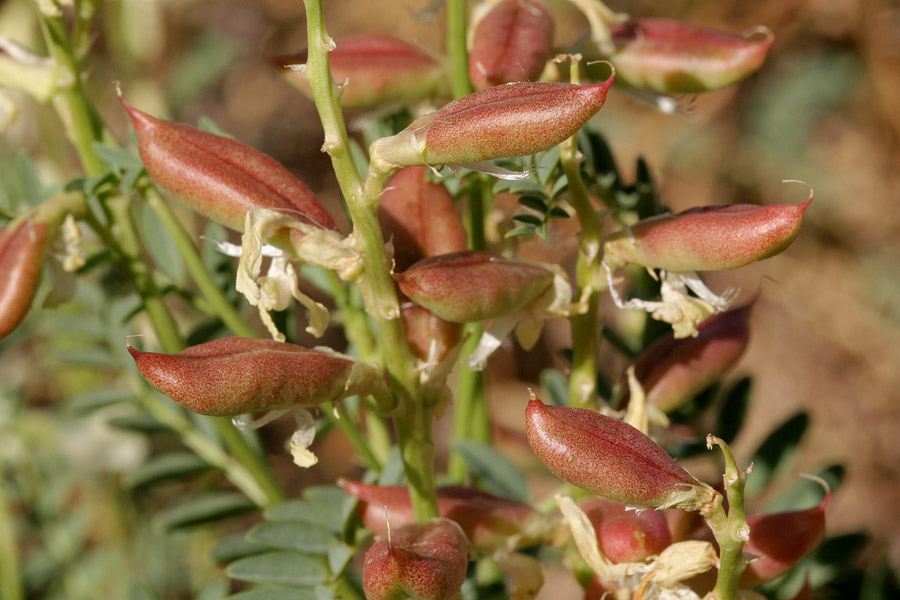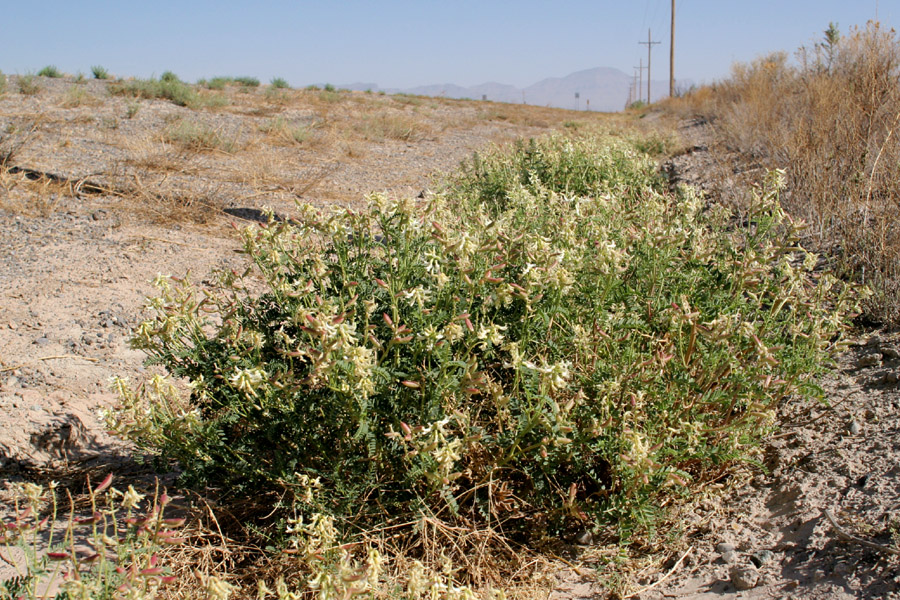Selected Plants of Navajo Rangelands
Loco, Ellis

Ellis loco has narrowly egg- or football-shaped pods, 3/4 to 1 1/2 inches long, and 1/4 to 3/8 inch in diameter.
It grows on bluffs, clay knolls, plains, bottomlands, and some forest and woodland areas. Ellis loco can be found on selenium-rich soils and alkaline soils of shale or volcanic parent material at 2,750 to 7,100 feet.
Like some locoweeds, Ellis loco is poisonous/toxic to livestock. Not all locoweeds are poisonous or toxic.
Locoweed species on the Navajo Nation may include:
- Astragalus amphioxys
- Astragalus beathii (Group 4, Navajo Endangered Species List)
- Astragalus ceramicus E. Sheldon var ceramicus
- Astragalus cronquistii (Group 3, Navajo Endangered Species List)
- Astragalus cutleri (Group 2, Navajo Endangered Species List)
- Astragalus heilii (Group 4, Navajo Endangered Species List)
- Astragalus humillimus (Group 2, Navajo Endangered Species List)
- Astragalus humistratus
- Oxytropis lambertii
- Astragalus lentiginosus Douglas ex Hooker var australis Barnely
- Astragalus lonchocarpus
- Astragalus missouriensis
- Astragalus mollisium
- Astragalus naturitensis (Group 3, Navajo Endangered Species List)
- Astragalus nuttallianus
- Astragalus praelongus Sheldon var ellisiae




©2018 NMSU Board of Regents.
Individual photographers retain all rights to their images.
Partially funded by the
Western Sustainable
Agriculture Research and Education Program
(westernsare.org; 435.797.2257),
project EW15-023.
Programs and projects supported by Western SARE are
equally open to all people.